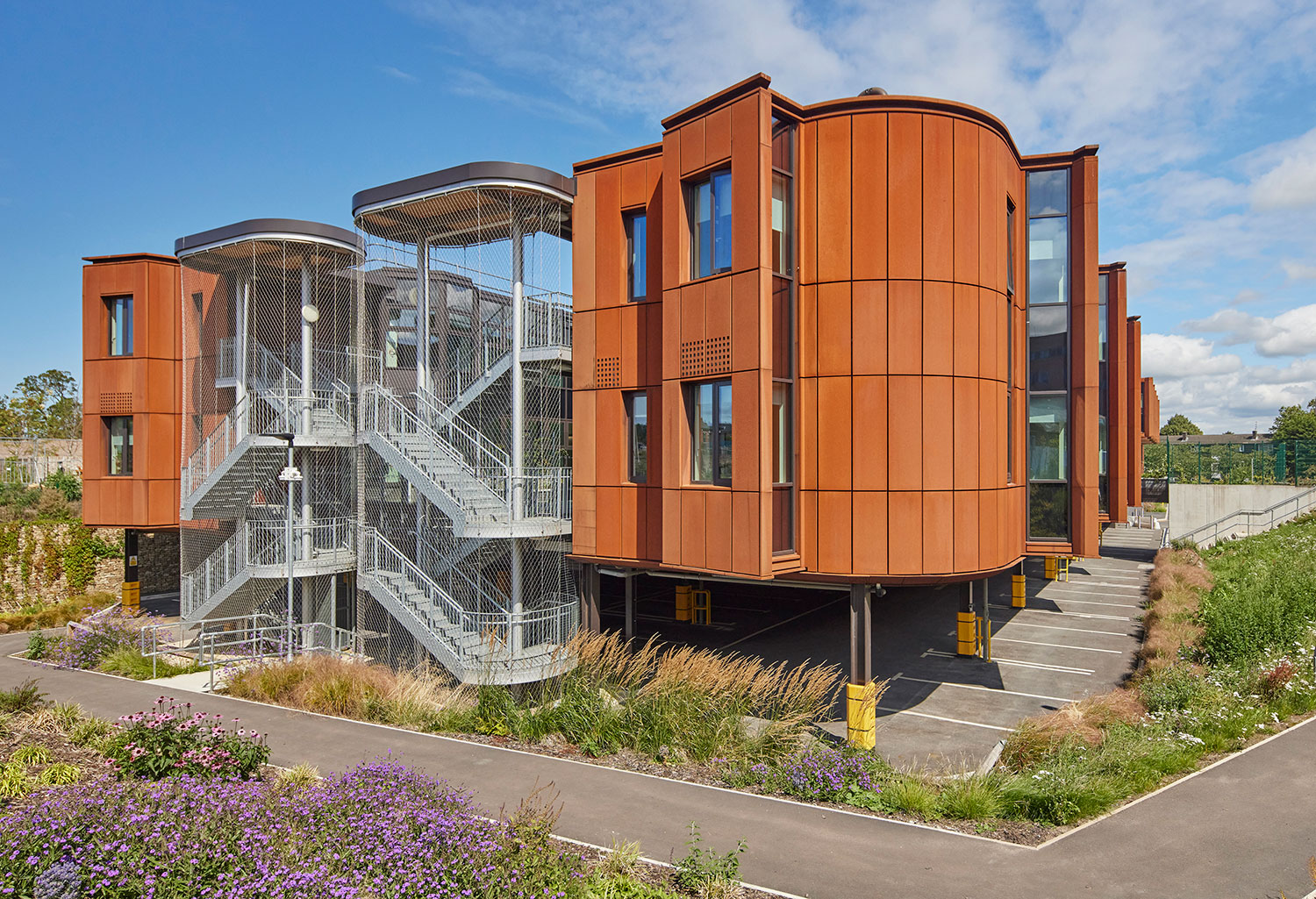In Liverpool, Cullinan Studio has designed two new buildings that focus on children’s mental health.
Words
Jason Sayer
Photos
Paul Raftery
In England last year, 11,740 children were admitted to hospital for mental health conditions. An alarming number, made even more worrying by the fact that 1.4 million children at school age sought NHS help last year – an increase of 76 per cent since 2019. In the Northwest and indeed Liverpool, such issues are more pronounced, where school pupils with social, emotional and mental health needs is 30 per cent higher than the national average.
So what’s being done? “Research demonstrates that we must re-forge our connection to nature to stimulate healing – particularly for the mind,” said Roddy Langmuir, practice leader, Cullinan Studio. The London-based practice has designed two new buildings for Alder Hey Children’s NHS Foundation Trust, an institution that serves 330,000 children and young people every year. Abiding by the research, the £20 million project sees two connected buildings surrounded by greenery.
“Our design for The Catkin Centre and Sunflower House embraces this therapeutic principle with places for refuge and outlook, gathered around courtyard gardens to create an environment that is warm and welcoming, with strong connections to natural materials and systems,” added Langmuir.
Elevated above a parking area and drop-off zone, the structures, known as Catkin Centre and Sunflower House, have been designed to safeguard incoming patients through a central pedestrian access point. Clad in weathered steel panels, they both offer internal landscaped courtyards and are surrounded by stone gabions and terraces filled with flowers and long grasses, complementing the vicinity’s earthy tones.
Though raised above the ground, visual connection to this natural setting is ensured through wide bay windows that area ideal for perching on or nestling into, with cubby holes having windows be oriented southwards towards a park to facilitate both privacy and views out. Inside is defined by the use of timber, which adds a sense of warmth to the environment, creating moments of spatial drama too, as can be seen with a conical wooden structure that rises up to the roof to let light in from the foyer’s ceiling.
The purpose of the two buildings is to bring together on one site an array of specialist mental health facilities that had previously been scattered across the hospital site and Liverpool: bedrooms, a kitchen, a classroom, as well as space for music, family therapy, play, counselling, dining and neurological services have all been included across the two buildings – though each serve a distinctly different purpose.
At the Catkin Centre, outpatient services including ASD, ADHD, development paediatrics, CAMHS, eating disorders and crisis care are catered for, with the building providing spaces for engagement in a range of quiet rooms, consulting rooms, family therapy rooms, an art/music therapy room, offices and meeting space.
Sunflower House, meanwhile, offers facilities for those staying at Alder Hey for a longer period of time, serving as a home-from-home for young people with complex and enduring mental health conditions. Here can be found 12 beds for children aged between five and 13 facing the most severe mental health challenges.
Across both buildings, circulation has been kept wide and bathed in natural light. Along corridors, there are places to sit and wait and gaze out the window and into the courtyard by resting on the deep sills, as well as places to sit with family. Art also punctuates spaces across the site, with work from artist Lucy Casson taking the form of playful birds dotted around the place.
Crucial to end result was the consultation Cullian Studio embarked on, engaging children part of a group of former patients that the Alder Hey team keep in touch with. “They were shown the early designs and also asked to imagine the qualities or spaces or atmosphere that they would ideally want to see in their new building,” Langmuir explained over email with Architecture Today.
“The ‘American Diner’ makeover of the café space came through that route. Later they were consulted over materials and colours etc. I remember one of them being very concerned that, despite their autism meaning they didn’t like bright colours [such as] reds and yellows, they suggested having a choice of areas to go to in our engagement space because others felt differently – impressively mature and generous!”
“The children and families who use the new cluster development deserve a fantastic place in which to receive their assessment and treatment,” David Powell, development director of Alder Hey Children’s Hospital added in a statement.
“The brilliant staff who provide their services are equally deserving. The Cullinan Studio team has understood this and responded magnificently with a building of quality and imagination. The burgeoning Alder Hey Health Campus will be a pioneer for the treatment of children and an instrument for healing.”
More images and drawings
Credits
Client
Alder Hey NHS Foundation Trust
Architect
Cullinan Studio
Delivery architect
10Architect (Post Stage 3)
Landscape architect
Turkington Martin (up to RIBA Stage 3)
DEP (Post Stage 3)
Structural engineer
Buro Happold (up to RIBA Stage 3)
Scott Hughes (Post Stage 3)
Services engineer
Buro Happold (up to RIBA Stage 3)
Lorne Stewart (Post Stage 3)
Quantity surveyor
Gleeds
Contractor
Galliford Try
Source: Architecture Today






